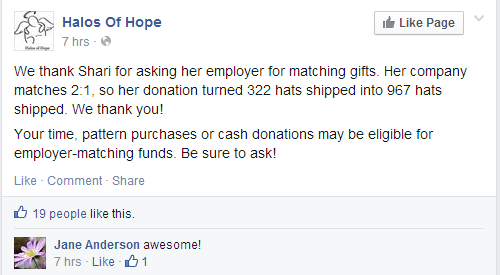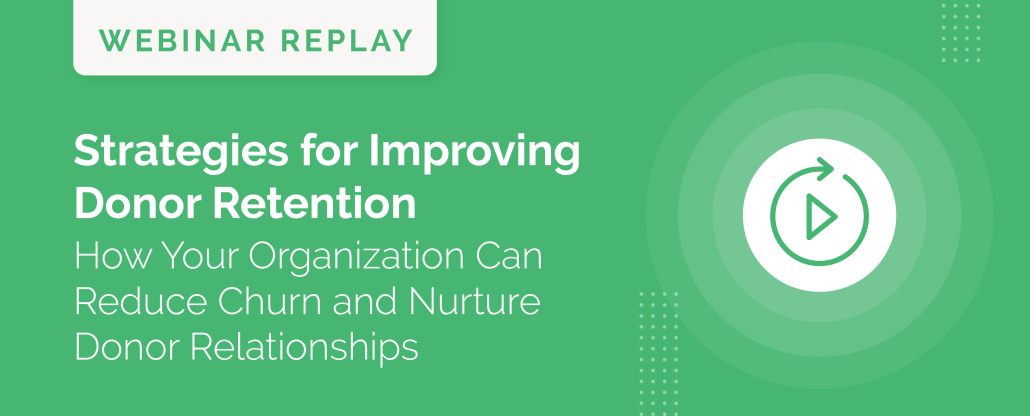How Nonprofits Can Use Matching Gifts to Improve Donor Retention
In recent years, donor retention rates have been hovering slightly above 40%. This means that if you have 100 donors, roughly 60 of them are only making one-time donations. If the focus on donor retention isn’t strong and comprehensive, a nonprofit organization will need to concentrate on acquisition of new donors instead, an importantly vital but often more costly pursuit.
There are numerous ways to boost donor retention ranging from simply interacting with donors more to utilizing social media. However, did you know you can also improve donor retention by using matching gift programs.
To help you improve your donor retention with matching gifts, we’ll answer 3 important questions:
- Why is donor retention important?
- What are the benefits of combining matching gifts with donor retention?
- How can our nonporift increase donor retention with matching gifts?
We’ll dive deeper into each question and provide you with actionable tips to help you retain donors.
1. Why is Donor Retention Important?
When a donor continues to give to your nonprofit, the most obvious benefit is the regular extra revenue.
However, keeping donors coming back has additional rewards.
First, your organization has the opportunity to develop meaningful relationships with donors. Think about it this way: you can’t cultivate a friendship with someone if you’ve only meet them once.
The same principle applies to building donor relationships. A donor that continues to give to your cause is much more likely to volunteer at your next event, serve on your board of directors, and advocate for your cause.
A donor that has a strong connection to your cause will share their passion for your mission with others, which could lead to even more donors.
For instance, you might launch a peer-to-peer campaign where your supporters raise money on your behalf. When donors share their personal experiences with their friends and family, it can be a create tool to acquire new donors.
Finally, retaining donors means you can gain useful feedback through these meaningful relationships. A donor that’s truly invested in your cause can provide suggestions and advice on how you can improve your stewardship, outreach, and much more.
By implementing their suggestions, you’ll not only gain their trust, but show other potential supporters that you will listen to their concerns.
If you want to learn more about donor retention, Fundly has an ultimate guide with expert tips.
2. What Are the Benefits of Combining Matching Gifts with Donor Retention?
While there is a surplus of useful donor retention advice out there, it is worthwhile to note the mutually beneficial union that results from putting matching gifts and donor retention together.
1. Shows that your nonprofit is a good steward of donors’ funds.
Donors that will stick with your nonprofit for the longterm want to know that your organization is maximizing their donations.
Promoting matching gift programs will let them know that you are doing just that.
2. Helps keep your organization at the front of donors’ minds.
Sending out communications about matching gifts to dedicated donors, whether through email, snail mail, or social media, will help them stay involved with your organization without feeling pressured to donate more of their own money. If you only ever talk to your donors when you want their donations, they’re more likely to stop contributing to your organization.
However, telling them about matching gift programs either during the donation process or directly after in a thank-you email will let them know that you want to help make their donations go further.
3. Results in larger future donations.
Letting donors know that they can make a greater impact with their donations generates a higher response to future appeals and results in larger contributions.
3. How Can Our Nonprofit Use Matching Gifts to Increase Donor Retention?
The following recommendations can be helpful for boosting donor retention using matching gifts.
1. Send a matching gift appeal immediately after a donor makes a donation.
If you don’t know who your donor’s employer is, supply them with general information about matching gifts after they’ve made a donation either in an acknowledgement or a thank you email.
If you have done your homework and know where your donor works (and more importantly, if their employer offers a matching gift program of some kind), give them company-specific information.
You can offer general guidelines or give more explicit directions like where to find matching gift forms. This is particularly important if your donors work for major gift matching companies.
Getting in touch with donors in the form of a thank-you email that also informs them of matching gifts immediately after they’ve donated is a great way to have a positive interaction with donors. You’re helping them maximize their donation and keeping in touch with them at the same time.
The Hereditary Neuropathy Foundation keeps their thank you emails genuine and informative, but they also let donors know about matching gift programs. They even thank donors in advance for looking into matching gift and volunteer grant programs.

Hereditary Neuropathy Foundation
2. Let donors know when their company’s matching gift came in.
Depending on how fast the donor’s company processed the gift-matching paperwork and sent the money to your organization, it could be weeks or months until the donor’s matching gift comes in. They might have forgotten about it by that point. Letting them know that their matching gift was received is another great way to reestablish contact with a donor, potentially encouraging them to donate in the future.
North Carolina State sends out emails to donors, thanking them for their initial donation and also informing them that their matching gift was received.

NC State Matching Gift Thank You Email
Notice too that the email ends with “NC State greatly appreciates your continuous support.” A final statement like this can help encourage donors to stick around and continue to donate.
3. Inform donors about matching gift statistics.
Whether it’s at the end of the month or at the end of the year, letting donors know how much you’ve raised because of matching gifts is not only a good way of keeping them in the loop but it also encourages future donations.
Halos of Hope uses Facebook to let donors know about how their donations and matching gifts are making an impact. Not only does the post highlight Shari, it also lets followers know about matching gift programs and suggests donors ask their employers about them. Because Shari and others who follow the Halos of Hope Facebook page now know more about how their donations are being matched, they’re more likely to contribute in the future using matching gift programs to double, or in Shari’s case, triple their donation.

Halos of Hope Matching Gift Thank You on Facebook
Determining how much money your organization raised from matching gifts and how many donors used matching gift programs will also help your nonprofit establish goals for matching gift donations as well as let donors know what kind of impact their donations are making.
Whichever method you use to let donors know about your matching gift statistics, it’s key to include information about current and future projects. Keeping donors updated on what their donations are funding establishes a personal connection, increasing donor retention.
Check out these other helpful ways to boost donor retention.
Making sure that donors stick around can be tricky, but using matching gift programs to maximize donations can help donor retention rates at your nonprofit.
For more useful fundraising tips, keep reading these additional resources:
- How to Market Matching Gifts. If you want more ways your organization can promote matching gifts, we have a whole list of ideas and examples to get you started!
- The Ultimate Guide to Annual Funds. Donor retention should be a primary part of any annual fund strategy. Learn about more tips and tricks you can use to increase donor retention for your annual fund.
- Top Matching Gift Companies. Promoting matching gifts can be difficult if you’re not familiar with the top corporate philanthropy programs. This guide will walk you through 20 of the best matching gift companies.
- Interested in learning more about boosting donor retention? Check out our immersive webinar on the topic!




